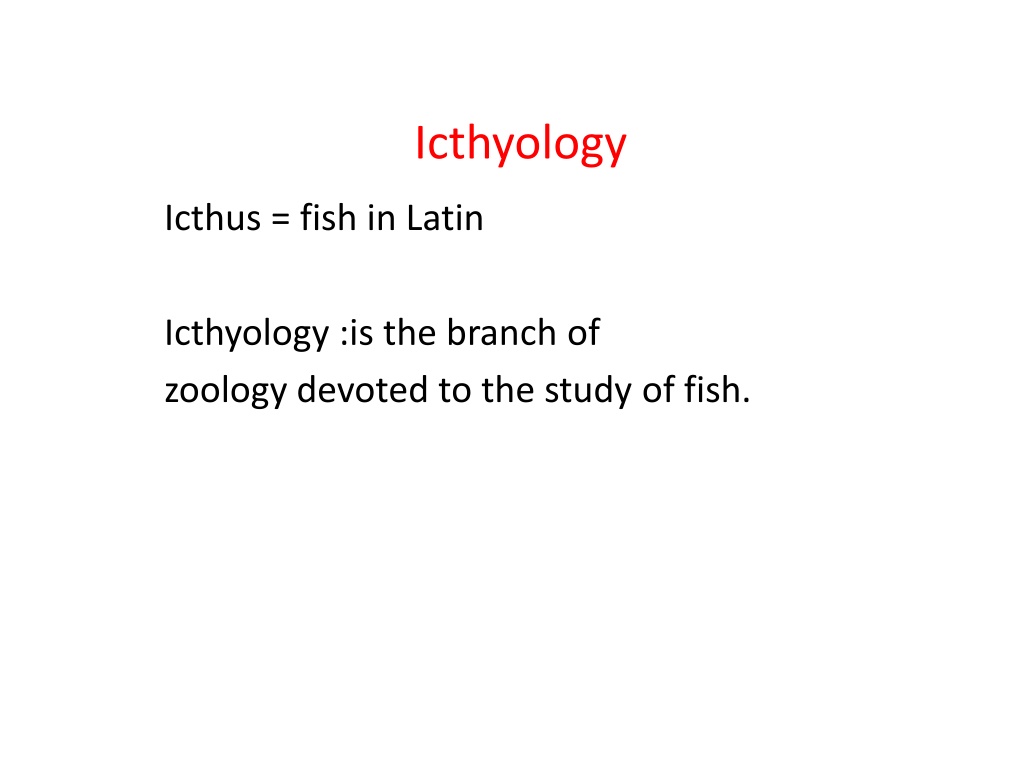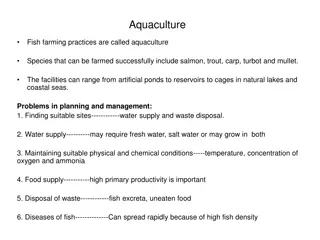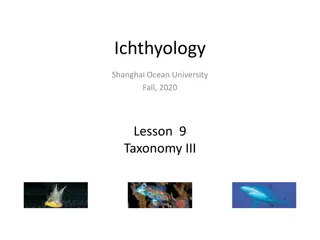Understanding Ichthyology: The Study of Fish and Aquaculture
Ichthyology, the branch of zoology dedicated to the study of fish, plays a crucial role in meeting the growing global demand for animal protein. With aquaculture emerging as a vital source of protein, fish not only provide essential nutrients but also contribute to health and nutrition. The classification of fish into groups such as Agnatha, Osteichthyes, and Chondrichthyes based on unique features like jaw structure and body shape further enhances our understanding of these aquatic creatures.
Download Presentation

Please find below an Image/Link to download the presentation.
The content on the website is provided AS IS for your information and personal use only. It may not be sold, licensed, or shared on other websites without obtaining consent from the author. Download presentation by click this link. If you encounter any issues during the download, it is possible that the publisher has removed the file from their server.
E N D
Presentation Transcript
Icthyology Icthus = fish in Latin Icthyology :is the branch of zoology devoted to the study of fish.
The need for animal protein has gone far beyond supply as a result of the rapid growth of human population in many countries of the world, especially in the developing countries. An urgent need is therefore necessary to increase the production of protein sources. Nowadays, aquaculture is one of the fastest growing food production sector and an increasingly important option in animal protein sources in the world.
Fish is an important source of food, income and recreation for people around the world. Even in small quantities, fish can have a positive effect on the overall health and nutrition of humans. Fish is an important source of nutrients such as vitamins A, B and D, calcium, iron and iodine. Fish also provides vital amino acids.
Classification 1-Agnatha. 2-Gnatha. a.Osteichthyes. b.Chondrichthyes.
Class I : Agnatha , Order : Cyclostomata The most important features: - Lacking jaws (Jawless) -Have sucker-like mouth (as Parasite) -Cartilaginous skeletons -Lacking dorsal and ventral fins -No gill arch -No operculum E.X lamprey and Hagfish
Class II: Osteochthyes (Bony fish) : Representing 90% of the fish known , (30.000 sp.) The most important features: - Have jaws - Bony skeletons - Have Gill arch - Have operculum - Have dorsal and ventral fins
Class III: Chondrichthyes a - order : Squaliformes ex. sharks and dolphin b - order : Rajiformes ex. Skates and Rays The most important features: - Fusiform (spindle-shaped) - Have Jaws - Cartilaginous skeletons - Have dorsal and ventral fins - Lack operculum but gill slits - Have gill arches
Body shape :( IN GENERAL ) A- Elongated shape (Fusiform) : B- Globe shape : C- Arrow shape : D- Flatenned shape : E- Compressed shape : F- Filiform shape:
Fins Paired fins or Single fins 1-Dorsal fin 2-Pectoral fin 3-Pelvic 4-Anal fin 5- Caudal fin
Teeth 1-Gill rackers. 2-Pharyngeal teeth. 3-Oral teeth.























